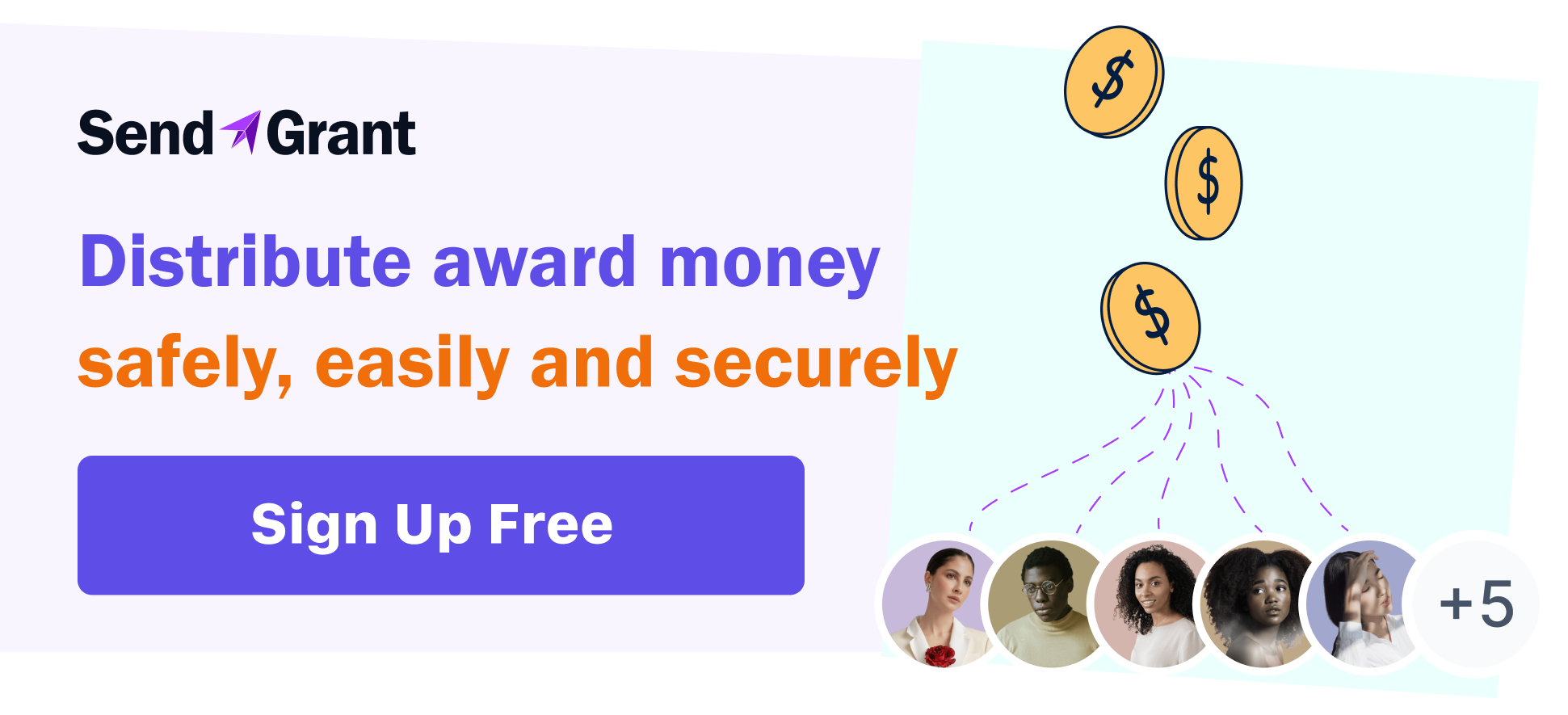How to Create a Budget for a Grant Proposal
If you want to learn how to create a budget for a grant proposal, you have come to the right place. A well-crafted budget shows funders that you have a clear plan for using their money wisely.
Let’s chat about:
- Why budgets matter
- How to research funder requirements, and
- How to make your budget clear and accurate
Our goal is that by the end of reading our post, you'll be ready to create a strong grant budget that helps your proposal stand out. Sounds good? Let’s dive in!
Understanding the Importance of a Well-crafted Budget
We have to be honest with you - Your budget can make or break your grant application. Funders want to see a thoughtfully prepared budget. When you have one, you demonstrate your financial responsibility, ensure project feasibility, and build trust with your funders.
Financial Responsibility in Action
A detailed, realistic grant budget shows your funders just how committed you are to using their money efficiently. This level of care and attention to detail can be that little extra element that sets you apart from other applicants.
Proving Your Project's Viability
A well-crafted budget can help you evaluate your project's financial health as well. Believe it or not, budgets allow you to identify potential shortfalls and demonstrate long-term sustainability to your potential funders. When you miss the mark on creating a solid grant budget, you could have your application passed over - no one wants that!
Building Bridges with Funders
Transparency is key with a grant budget. Funds want to clearly see how you plan to use their money. This builds trust, and with that trust, they're more likely to feel confident in your project. Not only can it help you secure one grant, but it could pave the way for future collaborations and funding opportunities too.
Researching Funder Requirements: The Foundation of Your Budget
Before you add a single number to your grant budget, consider for a moment what your potential funder is looking for. Here’s the thing - every organization has its own set of guidelines and expectations for grant-making. If you fail to meet these guidelines, it can quickly disqualify your proposal - no matter how great your project idea is.
Decoding the Grant Guidelines
Start by thoroughly reading the grant proposal guidelines such as:
– Eligibility criteria: Does your organization and project meet all requirements?
– Areas of funding: Does your project align with the funder's focus areas?
– Grant amount: Does your budget fall within the specified limits?
– Limitations: Are there rules about how funding can be used?
Understanding these elements will help you tailor your budget to the funder's expectations, and could help you succeed as a result.
Funder Perspectives: Inside the Grant Reviewer's Mind
The folks who review grants? Well, they are seasoned pros who've seen it all. They're looking for budgets that tell a compelling story about a project. That’s why they want to see you've thought through every financial aspect. You have to create a realistic and well-justified plan.
Grant budget red flags in an application:
- Vague estimates
- Inflated costs, and
- Budgets that are too lean
Reviewers expect your budget to align perfectly with the narrative of your project. If you're talking about community outreach for example, they'll look for those costs in your budget.
Value for money is key. It's not about being the cheapest. Instead, show you've made smart, impactful choices with the funds. And don't forget sustainability. Reviewers love seeing plans for keeping the project alive after the grant money runs out.
Estimating Project Costs Accurately - Both an Art and a Science

Once you've got a handle on the funder's requirements, now it's time to dig into the details of your project costs. You need to be as accurate as possible with your estimations because this will lead to a more realistic and achievable budget.
Breaking Down Your Project Costs
Consider all aspects of your project, including:
- Staff salaries and benefits
- Materials/supplies
- Equipment
- Travel and transportation
- Consultant fees
- Rent and utilities
- Monitoring and evaluation costs
- Expenses for creating and distributing project materials
Be as specific as possible in your estimates. This level of detail shows funders that you've thought through every aspect of your project.
Aligning Your Budget with Project Goals: The Perfect Match

Your budget should be a financial reflection of your project's goals and objectives. Every line item should contribute directly to achieving your project's aims.
Connecting Dollars to Outcomes
As you develop your budget, ask yourself:
- How does this expense help us achieve our project goals?
- Is this cost (truly!) necessary for the success of our project?
- Can we justify this expense to our funders?
If you want to create a compelling case for funding, ensure a clear connection between your budget and your project goals.
Including Direct and Indirect Costs - Where Things Can Get Tricky
Understanding the difference between direct and indirect costs is crucial when creating your grant budget. Both types of costs play important roles in your project. However, they're treated differently in your budget. Let’s explore both!
Direct Costs: The Front-Line Expenses
Direct costs are the ones directly tied to implementing your project. These might include:
- Salaries for staff working directly on the project
- Materials and supplies used in project activities
- Travel expenses for project-related trips
Indirect Costs: The Behind-the-Scenes Support
Indirect costs, often called overhead, are general operating expenses supporting your project, but not directly tied to the implementation. For example:
- Administrative staff salaries
- Rent and utilities
- General office supplies
Many funders allow you to include a percentage of your total direct costs as indirect costs.
Note: This percentage can vary, so be sure to check grant guidelines.
Budgeting for Personnel and Resources: Investing in Your Team
Proper budgeting for personnel and resources ensures you have the right people and tools to succeed. Let’s take a look at how to include your team in your grant budget.
Calculating Personnel Costs
When budgeting for staff, consider things like:
- Salaries/hourly wages
- Benefits (i.e. health insurance and 401k)
- Taxes, etc…
Be sure to account for the percentage of time each team member will spend on the project. For example, someone dedicating 50% of their time to the project, should only have 50% of their salary included in the budget.
Resource Allocation
Don't forget to budget for the resources your team will need. This might include:
- Computers and software
- Specialized equipment
- Office Supplies
- Training materials
Investing in the right resources can enhance team productivity and effectiveness.
Crafting a Compelling Grant Budget Narrative
Your budget narrative is your chance to explain the story behind the numbers. It's where you justify your expenses and show how they contribute to your project's success.
Telling Your Grant Budget's Story
In your narrative, be sure to:
- Explain any unusual or large expenses
- Justify why certain costs are necessary
- Describe how your costs were calculated
- Show how your budget aligns with project goals
A well-written narrative can help funders understand and appreciate your budgeting decisions.
Grant Budget Checklist: Your Path to a Winning Financial Plan
Here's a concise checklist of key points to remember when creating your grant budget:
□ Understand the funder's guidelines thoroughly
□ Align budget with project narrative and goals
□ Break down costs in detail, avoid vague amounts
□ Include direct and indirect costs per guidelines
□ Calculate personnel costs accurately
□ Account for all necessary resources
□ Double-check all calculations
□ Justify unusual or large expenses
□ Demonstrate cost-effectiveness
□ Plan for financial sustainability
□ Stay within the funder's specified amount range
□ Use funder's preferred format/template
□ Include required matching funds/contributions
□ Proofread for clarity and consistency
□ Get expert review before submission
□ Ensure clear organization and readability
□ Include a contingency plan if allowed
□ Align budget with project timeline
□ Consider visual aids for clarity
□ Show a clear understanding of financial needs
Remember, a well-crafted budget communicates your project's value and feasibility to potential funders.
Distributing Funds with Ease: Meet Your New Best Friend, SendGrant
So, you've nailed it and secured that grant funding. Awesome! But now comes the hard part - getting those funds distributed where they need to go. Enter SendGrant - the financial wizard you didn’t know you needed.
Backed and built by the folks that created SmarterSelect. SendGrant is a software platform that takes all the headaches out of distributing scholarship, grant, and award funds. We're talking secure electronic transfers, a slick client portal for easy management, and automated notifications that keep everyone in the loop.
Plus, it informs the funds are used as intended and keeps a full audit trail.
With SendGrant handling the nitty-gritty financial stuff, you can pour your energy into what really matters - bringing your project to life!
Wrapping It Up: Your Path to Grant Budget Brilliance
Creating a grant budget can feel impossible, but it's the secret sauce that can turn your project dreams into reality. Remember, your budget is the story of your project told in dollars and cents. It shows funders that you've got your ducks in a row and know exactly how to make magic happen with their money.
So, take a deep breath, follow the steps we've laid out, and you'll be well on your way to budget brilliance.
And hey, once you've won that grant (because we believe in you!), make your life easier with a tool like SendGrant. Click here to get your first five transactions for free!



